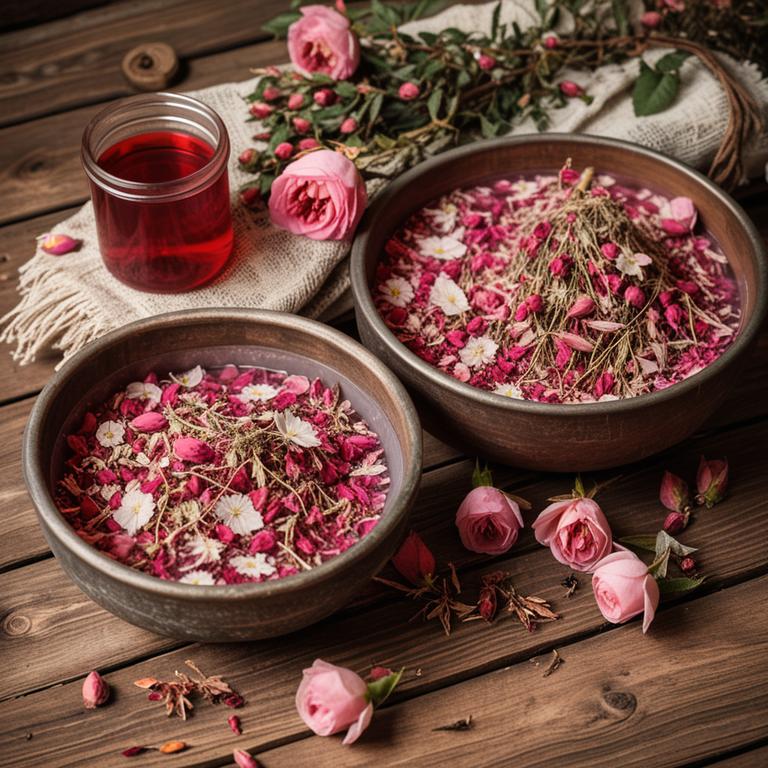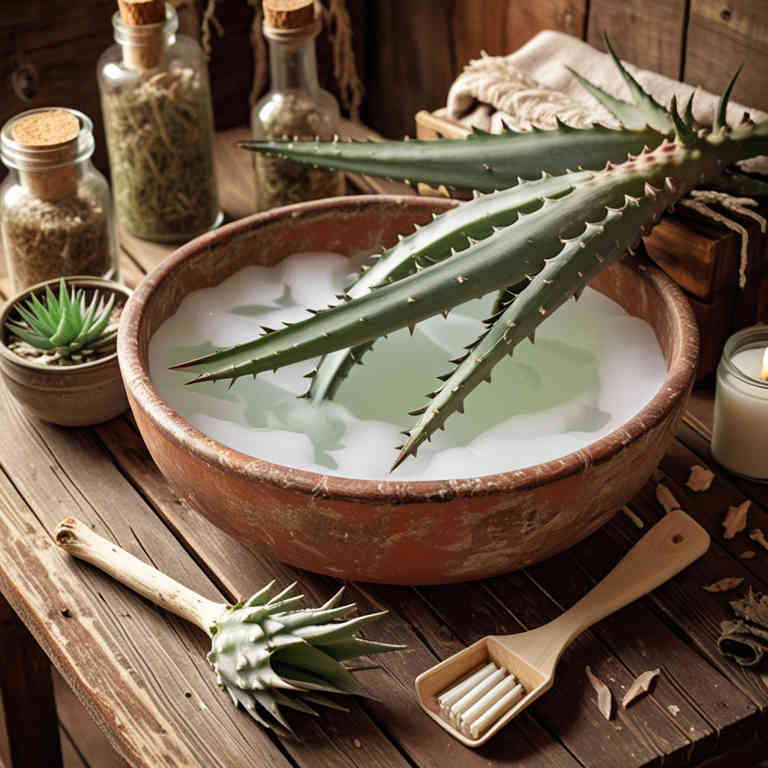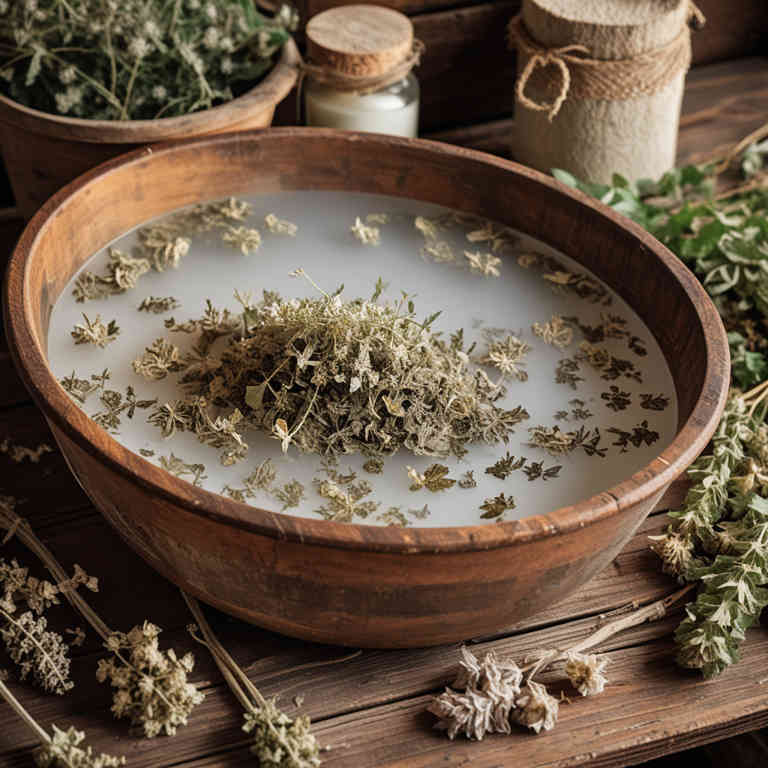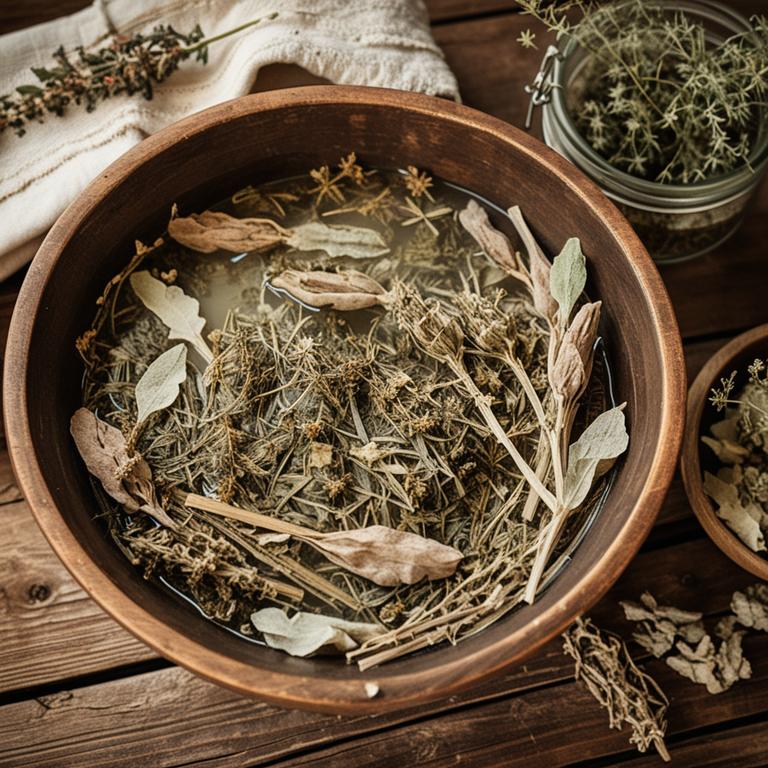10 Best Herbal Baths For Pimples

Herbal baths can be an effective natural remedy for treating pimples by leveraging the soothing and antimicrobial properties of certain herbs.
Herbs such as lavender, chamomile, and calendula are commonly used in baths due to their ability to reduce inflammation and calm irritated skin. Adding a few tablespoons of dried herbs to warm water and soaking for 15 to 20 minutes can help open pores and promote skin healing. These baths are particularly beneficial for individuals with sensitive or acne-prone skin, as they provide a gentle yet therapeutic approach to skincare.
Regular use of herbal baths can complement other acne treatments and contribute to clearer, healthier skin over time.
FREE Herb Drying Checklist
How to make sure every batch retains maximum flavor, color, and aroma without the risk of mold or over-drying. Eliminate guesswork and trial-and-error, making herb drying faster, easier, and more efficient every time.
Table of Contents
1. Hypericum perforatum

Hypericum perforatum, commonly known as St. John's Wort, has been traditionally used in herbal baths to help alleviate skin conditions such as pimples.
The plant contains compounds like hypericin and flavonoids, which are believed to have anti-inflammatory and antimicrobial properties that can soothe irritated skin and reduce acne breakouts. To prepare a St. John's Wort bath, a few tablespoons of dried herb are steeped in hot water and then added to a warm bath, allowing the skin to absorb its beneficial properties. This natural remedy is thought to help balance skin oils and reduce redness associated with pimples.
However, it is important to consult a healthcare professional before using it, especially if you are on medication, as it can interact with certain drugs.
2. Chamomilla recutita

Chamomilla recutita, commonly known as chamomile, is a popular herbal remedy often used in baths to help soothe and treat skin conditions such as pimples.
The anti-inflammatory and antimicrobial properties of chamomile can help reduce redness, swelling, and bacterial growth associated with acne. To use chamomile in a bath, you can steep dried chamomile flowers in hot water and then add the infusion to a warm bath, allowing the skin to absorb its beneficial compounds. Regular use of chamomile baths may help improve overall skin health and reduce the frequency of breakouts.
However, it is important to ensure that the skin is not overly sensitive, as some individuals may experience allergic reactions to chamomile.
3. Rosa canina

Rosa canina, also known as rosehip, is a traditional herbal remedy that has been used for centuries to support skin health.
When used in herbal baths, rosehip can help soothe inflammation and reduce redness associated with pimples due to its high concentration of antioxidants and essential fatty acids. The anti-inflammatory properties of rosa canina may help calm irritated skin and promote healing of blemishes. To prepare a rosa canina bath, infuse dried rosehip berries in hot water and add the infusion to a warm bath, allowing the skin to absorb the beneficial compounds.
Regular use of rosa canina herbal baths may contribute to a more balanced and clear complexion, making it a natural and gentle option for those dealing with acne.
4. Urtica dioica

Urtica dioica, commonly known as stinging nettle, has been used for centuries in traditional medicine for its anti-inflammatory and skin-healing properties.
When used in herbal baths, stinging nettle can help soothe skin irritations and reduce redness associated with pimples. The plant contains compounds like histamine and formic acid, which may initially cause a tingling sensation but ultimately promote skin detoxification. To prepare a nettle bath, fresh or dried leaves are steeped in hot water and then added to a warm bath, allowing the skin to absorb its beneficial nutrients.
Regular use of urtica dioica baths may help improve overall skin health and reduce the frequency of breakouts.
5. Calendula officinalis

Calendula officinalis, commonly known as pot marigold, is a versatile herbal remedy often used in homemade baths to soothe skin conditions, including pimples.
The anti-inflammatory and antimicrobial properties of calendula help reduce redness, swelling, and bacterial growth associated with acne. To prepare a calendula bath, steep dried calendula flowers in hot water for several hours, then strain and use the liquid as a bath soak. This gentle, natural treatment can be used daily or as needed to promote clearer skin.
While calendula baths are generally safe, individuals with sensitive skin should perform a patch test before full immersion to avoid any adverse reactions.
6. Aloe barbadensis

Aloe barbadensis, commonly known as aloe vera, has long been recognized for its soothing and healing properties, making it a popular choice for natural remedies, including herbal baths for pimples.
When used in a bath, aloe vera can help reduce inflammation and redness associated with acne by calming the skin and promoting healing. Its antibacterial properties may help combat the bacteria that contribute to breakouts, while its hydrating effects can prevent the skin from becoming too dry, which can worsen acne. To use aloe vera in a bath, simply mix a few drops of pure aloe gel or aloe-infused bath salts into warm water, allowing the skin to absorb its benefits during soaking.
Incorporating aloe barbadensis into a skincare routine can be a gentle and effective way to support clear, healthy skin.
7. Melissa officinalis

Melissa officinalis, commonly known as lemon balm, is a versatile herb that has been traditionally used for its calming and healing properties.
When incorporated into herbal baths, lemon balm can help soothe skin irritation and reduce inflammation associated with pimples. The essential oils and phytochemicals in lemon balm possess antimicrobial and antiseptic qualities that may help combat the bacteria responsible for acne. To prepare a lemon balm bath, steep fresh or dried leaves in hot water and use the infused water to fill a bath, allowing the skin to absorb its soothing benefits.
Regular use of melissa officinalis baths may contribute to clearer skin and an overall sense of relaxation and well-being.
8. Lavandula angustifolia

Lavandula angustifolia, commonly known as English lavender, is often used in herbal baths to help alleviate skin conditions such as pimples due to its anti-inflammatory and antimicrobial properties.
When added to warm bath water, lavender essential oil or dried lavender flowers can soothe irritated skin and reduce redness associated with acne. The calming aroma of lavender also promotes relaxation, which may indirectly support skin health by reducing stress-related breakouts. Regular use of lavender-infused baths can help balance the skin’s natural oils and prevent excessive sebum production.
However, it is important to dilute the essential oil properly to avoid skin irritation, and individuals with sensitive skin should perform a patch test before incorporating it into their routine.
9. Salvia officinalis

Salvia officinalis, commonly known as sage, has been traditionally used in herbal baths to help soothe and treat skin conditions like pimples.
The essential oils and compounds found in sage possess antimicrobial and anti-inflammatory properties that can help reduce bacterial growth and inflammation associated with acne. When infused into bath water, sage can gently cleanse the skin, helping to unclog pores and prevent breakouts. Its astringent qualities also help tighten the skin, reducing the appearance of blemishes.
Regular use of sage-infused baths may contribute to clearer, healthier skin by promoting natural healing and balancing the skin's pH.
10. Cnicus benedictus

Cnicus benedictus, commonly known as blessed thistle, has been traditionally used in herbal baths to help alleviate skin conditions such as pimples.
This herb is believed to have anti-inflammatory and detoxifying properties that may help reduce redness, swelling, and bacterial growth associated with acne. To prepare a blessed thistle bath, steep a handful of dried herb in hot water for several minutes, then add it to a warm bath and soak for 15 to 20 minutes. Regular use of such baths may support skin health by promoting circulation and clearing impurities from the pores.
However, it is advisable to consult a healthcare professional before using this remedy, especially for those with sensitive skin or existing skin conditions.